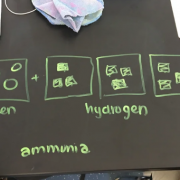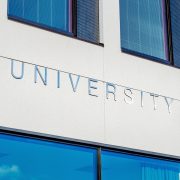Giving Voice to Student Career Aspirations
What is the future of career pathways and the skills that today’s students need to secure the jobs of tomorrow? With every presidential proclamation regarding education policy and education funding, the critics are quick to glean meaning from what the White House is — and isn’t — doing with regard to the educational pathways available to all students.
During his State of the Union, President Donald J. Trump called for a more significant national investment in workforce development. Trump then followed that declaration with his thoughts about the role of community colleges and how they need to take a greater role in vocational training and that workforce development.
Perhaps one of the most significant policy statements a President can make is through the President’s budget plan. While these plans are rarely acted on whole cloth by Congress, they provide a clear understanding of the Commander in Chief’s budget and policy priorities.
And while much is said about the overall education cuts proposed by President Trump the budget of the U.S. Department of Education, one must also look at what is in the budget, including full funding for the Carl D. Perkins Career and Technical Education Act programs and an increase in spending for STEM (science-technology-engineering-math), with a particular focus on STEM education innovation.
With each new school year, with each new presidential budget document, we see greater and greater attention on how best to align our K-12 educational priorities with career pathways. Full funding for Perkins, at a time when other non-Defense federal programs are being cut, speaks loudly as to the need for continued investment in career training and workforce development programs. An increase in STEM education innovation addresses the need to ensure all students are equipped with the basic knowledge and skills to understate the careers that may be available in the future.
Yes, the discussion on education budget priorities will continue. Yes, terms like “vocational education” had all but been banished from the vernacular of 21st century educators. Yes, a White House proposal is far from being written into law and fully funding such priorities and the teachers who deliver them.
As these important issues are discussed, it is imperative that the White House and other policymakers have a clear understanding of the research regarding such topics. Recently, the Student Research Foundation compiled the most recent data regarding today’s young people and their perceptions regarding both school and career. These findings aligned with many of the priorities currently being advocated for in Washington, DC and in state capitals across the nation.
Seven in 10 ninth graders are already considering their potential career pathways. These students recognize that as important as academic knowledge is, their success will also be shaped by their health, finance, national issues, global issues, and environmental knowledge.
Despite our ever-growing attention to STEM education, there is a 37-point gender gap among students with interest in a STEM career, with just 28 percent of young women currently considering such pathways. There are similar racial gaps in STEM interest, with African-American students demonstrating the least interest in these opportunities.
The gaps in STEM interest are reflected in the gaps among those taking STEM classes in high school. While 51 percent of Asian-American students and 48 percent of white students have taken at least seven STEM-focused classes during their high school careers, only 40 percent of Hispanic students and just 30 percent of African-American students do.
Through the important work of many partner organizations, there is a great deal of research on student perceptions with regard to STEM, career and technical education, health careers, and 21st-century skills. These data points serve as an important primer for future discussions on student vocations and student aspirations. They equally serve as important metrics in understanding where our policy priorities should lie and where the gaps may rest between learning today and student needs.
Each academic year, our schools and our students face a new set of challenges, each greater than those from the previous year. By tapping into student perceptions every year, SRF and its partners are able to offer clear data on both student beliefs and the trends in those beliefs. That data, though, is only as strong as the pool of students who complete the surveys every year.
As we continue to prioritize career and technical education, STEM education, and the connections between school and career success, it is essential that we know as much as possible about student learning and student aspirations. Every high school student today should be participating in such studies. Every high school teacher should be requesting such studies. And every parent should want to make sure their child’s voice is being heard on such important topics.
Our schools, our educational opportunities, and our economic success depend on informed decisions. There is no better way to prioritize the needs of schools than with a clearer understanding of student perceptions, experiences, and aspirations.
Related Posts
Food for Thought When It Comes to Student Data
Using Student Data to Benefit Students










Leave a Reply
Want to join the discussion?Feel free to contribute!